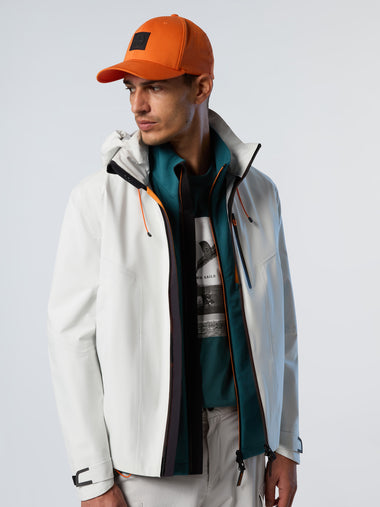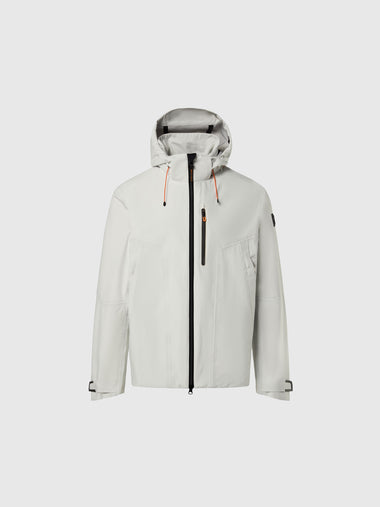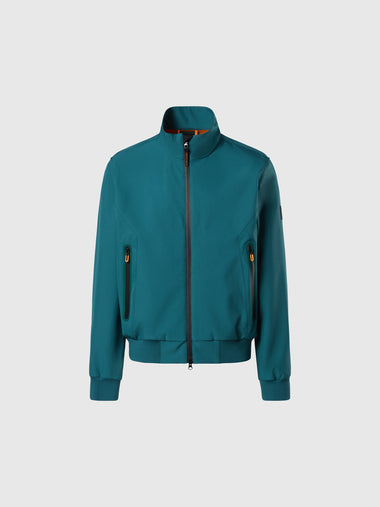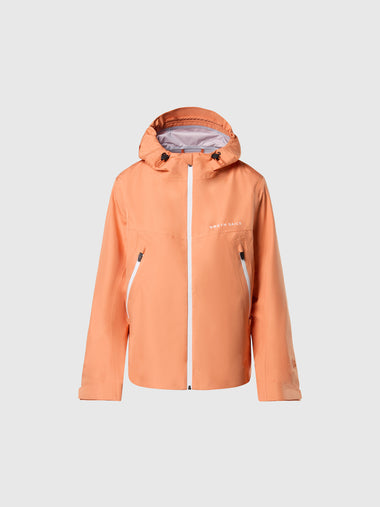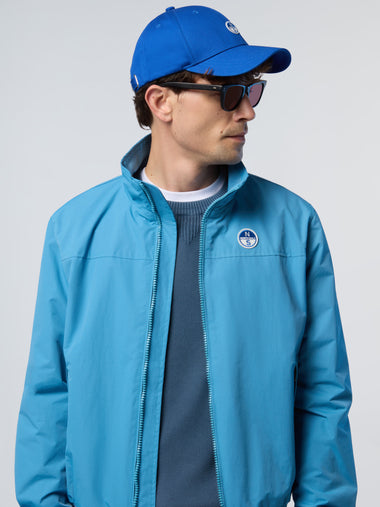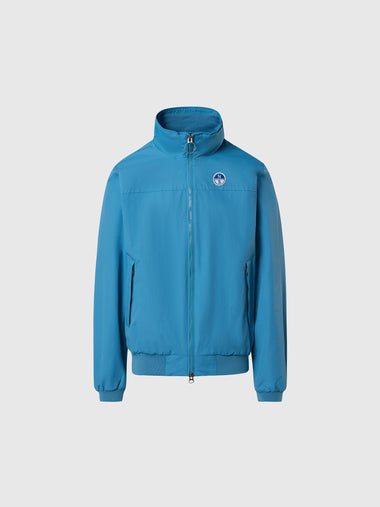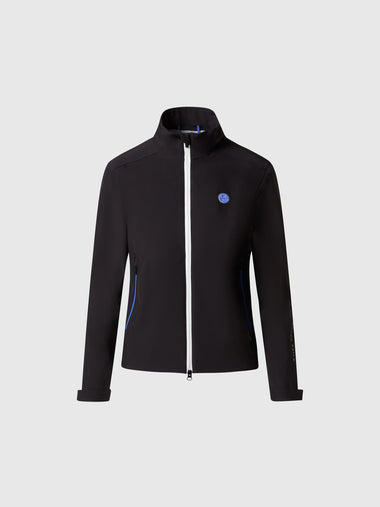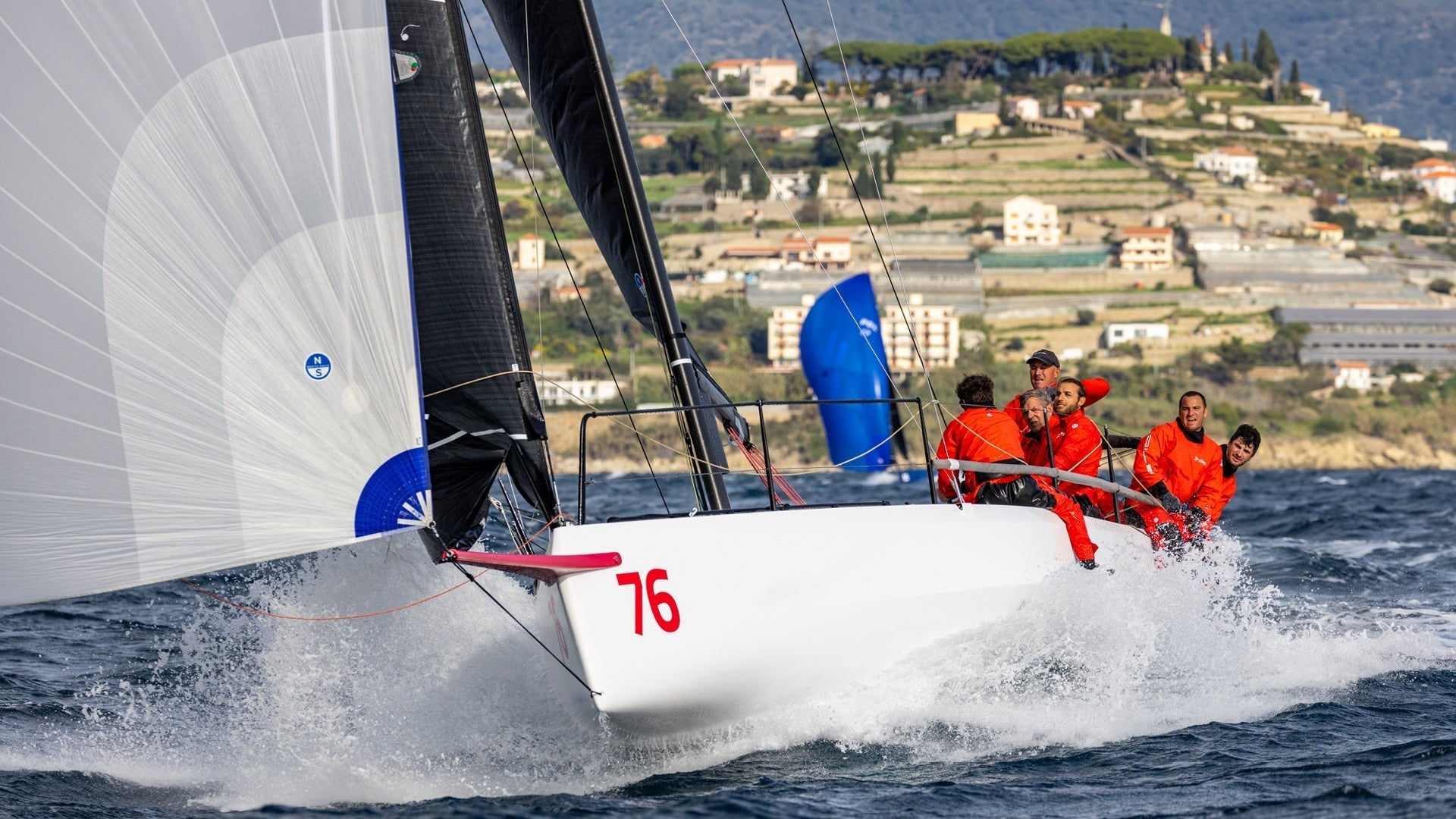J/24 FAQS
J/24 FAQs
A compilation of questions and answers we have received over the years.
What’s the recommended tension for the backstay?
With regards to the backstay, we think that having it off to measure would make it easier to get a method where all boats could be tuned the same.
With that in mind we suggest (this is in the tuning guide) that the tension on the backstay bridle always be adjusted so the blocks sit about 8″ below the triangle that joins everything together.. So each time you tighten or loosen the shrouds for a change in wind velocity you will need to do the same for the backstay bridle.
Can you give me some hints on how to go faster on a J/24?
It is really important to sail at max weight 882 lbs. In anything above 10 kts, that extra weight is noticeable in terms of upwind performance. At the top of the fleet, we try really hard to make sure we are max crew weight.
Changing gears in the J/24 is huge! The skipper has a lot on his plate. The top guys make the skipper responsible for the backstay, traveler, mainsheet, genoa trim and steering the boat. Let me try to explain how this works. A nice steady breeze makes it a lot easier obviously. In the steady breeze you can kind of get things set up and just rumble. In a puffy breeze, there is a constant adjustment of the controls.
You want to start by getting your boom at centerline. You accomplish this with mainsheet tension and traveler. The mainsheet tension controls the amount of twist in the sail and leech tension. In light air or light spots, you want twist (and the top leech tell tale flying) so softer mainsheet tension and a higher traveler to keep boom at centerline. A twisty main is also good for accelerating or for bow down modes. You want nice twist in your main after a tack to help the boat get back up to speed quickly. In medium breeze, you want a tighter mainsheet to close the leech a little for better pointing. You have to ease traveler down to keep boom at centerline if you pull on mainsheet tension. The only time you let the boom go below centerline and go traveler down is when you really need to de-power and keep the boat flat. Even before a lot of traveler down, I am usually putting on some backstay to de-power.
The backstay has a few rules of thumb. Take some off for more power and pull some on to de-power. If your main starts to invert and flog, you should ease some backstay to get flow over the sails going again. Backstay is more of a macro adjustment unless it is really puffy, then you are constantly easing it off in the light spots. Also, if you are ever overstood in breeze and need to crack off, put lots of backstay on. If you need to point higher in a short distance like if you understood the windward mark, take backstay off.
The genoa trimming by the skipper is key. Basically the skipper sits right next to the winch that has a winch handle in place. In a puff the trimmer, who is hiking out all the way, will ease the genoa in anticipation of the puff, not letting the boat heal over (we’re talking like a foot or more of ease at times), and then the skipper winds the winch handle to crank the sail back in before the boat heals to windward. This takes some practice, but once you get it, it’s huge. Never let the boat heal to leeward. Anytime the boat is healing it is sliding sideways a lot faster than you think. When a 30 knot puff hits, you actually have better VMG if your boat stops dead in the water and remains flat, than if you heal over, go forward but slide sideways. The boat that stopped dead in the water will actually be closer to the windward mark after the exchange.
How often do we get new sails? The Genoa obviously takes the biggest beating. After only a couple heavy air regattas you will be able to notice a performance difference between a new and used sail. It’s not only the beating the sail takes against the mast in tacks, but also the crew stuffing it up on the bow during downwind sailing. You might not like to hear this but we make sure we have a new Genoa for every big event.
What do I do when a puff huts?
Puff hits…crew eases genoa, skipper eases traveler.
Puff begins to ease up,skipper pulls traveler back up, cleats it. Then moves quickly to the winch handle and cranks in the genoa.
Repeat the above sequence with each new puff.
There are different variations of this depending on-strength of the puffs. If the puffs are very strong…vang sheeting-becomes a little more effective. A super tight vang and using the process above, but instead of easing traveler down, you’re easing mainsheet.
The backstay should be set as close to a happy-medium as possible, but every now and then it should be adjusted based on the overall trend of the breeze. I like to have it eased in the light spots as much as possible, as long as you can get enough back on before the next big puff hits.
It would be nice to have three hands. Trust me it is not easy…it takes a lot of practice.
I’ve been told J/24’s roll tack easy enough. Using techniques I adapted from dingy racing and a basic knowledge of hydrodynamics, I tested this theory and couldn’t get it to roll over. Is there a better technique for fixed keels that i don’t know about?
Roll facing out and push down on the windward life line. Start from the middle of the boat and do it all together. With four people rolling you should be able to get the windward rail all the way down to the water, once it is flatten the boat slowly and you will get a nice squirt forward.
What is your opinion about having multi color sails. I read somewhere that it was better to have one color due to the stretch in the panels over time. Is this a big issue?
We highly suggest having the head and clews of the sail each a solid color. Also I would try to have these areas lighter colored if possible. This way the top and bottom of the sail is made from the same lot of cloth and it will stretch relatively evenly over the life of the sail. Also making the sail with lighter cloth in the top and bottom will insure that you are getting a sail made with Grade A woven cloth. With darker colors flaws can be hidden and even though all the cloth is tested by the maker and us this generally seems a safer bet.
The tuning guides tell me about which ring to fly the pole from but as the wind builds I find that the floating tack sometimes wants to fly quite high. The question is, once you have got the pole to horizontal, do you keep raising the pole to keep the kite level or do you use the barber hauler (twinning lines) to keep the floating tack down to the pole tack. Does water conditions affect your thinking on this?
Generally the J/24 likes the pole on the low side so while we try to keep the clews level we also work on keeping the pole end a little lower than the free flying end. We generally twing the pole side down enough that the pole will sit right up at the tack of the spinnaker at all times.
Generally do not use the leeward twing on a J/24. The boom acts as plently of a twing when needed.
When to move the mast butt position?
There is no real reason to have to change the mast butt position once you find the proper location. Here we use a Loos Model B tension gauge and with the lowers on 21 and the uppers on 24 we measure the headstay tension with the backstay completely disconnected. The headstay will be loose and the tip of the gauge should be about 30 mm from the headstay if you have everything set up right. You will also have about 3 to 4 cm of prebend at this point. The only time I have seen adjusting the butt while racing work is when it is really blowing hard (25 knots plus) and then moving it forward just a bit MIGHT help.
How to ease and trim the main and jib together smoothly? Well..easing isn’t hard but since I grind the winch for the jib/genoa and pull in the main they don’t come in together, it’s always one or the other first. Both together is obviously better but I’m not sure how to do it. Do you have the cockpit guy grind in the jib himself and only worry about the main when both are eased or do I just try to do both myself. How do you do it?
You are talking about when you are cross sheeting the genoa and jib. Basically I think the best thing to do is if you just ease the jib a inch or two, you need to grind the sail back in a keep the cockpit guy hiking out.
Yes the sail will not be trimmed in exactly the same but I think this is less disruptive. If you have the ease the jib a lot (like when ducking) have the cockpit guy turn around and grind and tail the sheet him/herself. This way you can concentrate on the mainsail.
The balance between the two sails on a boat like a J with the a small keel is important. Keep playing the sails in concert with one another.
How can I get my J/24 to point higher?
Generally the reason a J/24 does not point (or sail as close to the wind as the boats around it is because the boat is not developing enough weather helm. The boat needs a small amount of weather helm to be able to always sail as close to the wind as possible.
The first thing to do is to recheck your boat against the tuning guide to make sure you have followed everything correctly. If this is so then I like to go out sailing with the rig tuned properly for the wind and take a close look at the mainsail set up. Usually what you will find in these cases is that the lower part of the main to too flat relative to the top of the sail. In general the sail should have a nice smooth shape from top to bottom, often in cases where the boat is not pointing well the bottom of the main will be very flat right off of the mast indicating that we need to move the mast butt forward. Start by moving it ¼” and see if that makes a difference, it should make the lower part of the mast a lot straighter and give you more helm and height!
My J/24 sails nice and high but I can’t get it to go as fast as the other boats through the water. What can I do?
You basically have the opposite problem of the folks in the question above. There are times in race where tactically you want to ” put the bow down” and just go fast regardless of height. If your boat won’t do this you are handicapped a bit. The problem is that your lower mast is too straight which makes the main too full and causes you too develop an excess amount of weather helm. Every time you try to sail the boat low and fast the boat heels too much and develops more weather helm. Move the mast butt back ¼” to put in more lower bend, recheck your shroud tensions and you should be all set.
Should I use the upper or lower ring on the mast for the spinnaker pole?
With the Slant Nose+ spinnaker we use the lower ring until about 15 knots of wind. For the FR-2 spinnaker use the lower ring until about 10 knots.
When I sail in heavy air with the jib I can’t get the jib halyard tight enough to remove all the wrinkles in the luff of the sail?
Above 20 knots you want the luff of the class jib smooth with no wrinkles. To get the halyard tight enough sail downwind before the start with the backstay off and have two crew pull up the halyard. This should get it tight enough. Be sure to get the jib up BEFORE you tighten the backstay at the leeward mark.
How important is the J/24 spreader angle adjustment? This seems to be hard to get right.
The spreader angle is hard to get right but it is worth the effort. The spreader angle affects how “stiff” the mast will be in the boat. Angle the spreaders forward and the mast gets stiffer, sweep back and the mast gets more flexible. This is important because as we tighten the backstay we need a certain amount of stiffness in the mast so the headstay will get tighter and flatten the genoa as the breeze builds.
If you have a older mast with “male” stainless steel fittings coming off the mast we suggest either retrofitting to a thrubar set up or using the Allis Racing style spreader adjusters. With a newer mast you may need to bend your thru bar to get the right angle (see your local machine shop).
Have a Question? Ask the J/24 Experts






